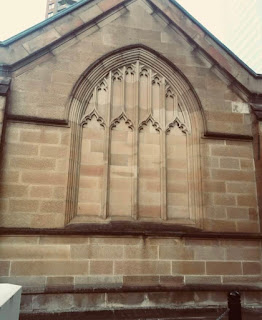York Street Synagogue - York Street - Sydney
The York Street Synagogue, also known as the York Street Great Synagogue, is a historic Jewish synagogue located in Sydney, Australia. It holds a significant place in the history of Sydney's Jewish community and is recognized for its architectural and cultural significance. Here's an overview of its history:
Founding and Early Years:
- The York Street Synagogue was established in the mid-19th century, with the foundation stone laid in 1842.
- It was the first purpose-built synagogue in Sydney and served as a place of worship for Jewish immigrants who had settled in the city.
Architectural Features:
- The synagogue's design reflects the architectural style of the mid-19th century, characterized by its Georgian and Victorian influences.
- It features sandstone construction, arched windows, and a prominent portico entrance.
Significance for the Jewish Community:
- The York Street Synagogue became a central institution for Sydney's Jewish community, providing a place for religious services, community gatherings, and social activities.
- It played a crucial role in maintaining Jewish traditions and fostering a sense of belonging among Jewish immigrants.
Expansions and Renovations:
- Over the years, the synagogue underwent various renovations and expansions to accommodate the growing Jewish community.
- In the late 19th century, the synagogue's interior was redecorated in a more ornate and Victorian style.
Cultural and Religious Activities:
- The York Street Synagogue was not only a place of worship but also a hub for cultural and educational activities within the Jewish community.
- It hosted religious services, celebrations, lectures, and events that promoted Jewish heritage and values.
Decline and Revival:
- By the mid-20th century, the Jewish population of Sydney had shifted, and many Jews had moved to other areas of the city.
- The synagogue faced challenges and declined in terms of active membership and use.
Historical and Heritage Significance:
- Despite the challenges, the York Street Synagogue remained a historically significant building in Sydney's architectural and cultural landscape.
- Its preservation was important to maintaining the historical and heritage value of the city.
Current Status:
- In recent years, the York Street Synagogue has undergone restoration efforts to preserve its historical architecture and ensure its continued relevance.
The York Street Synagogue stands as a testament to the history of Jewish immigration and settlement in Sydney. Its architecture, cultural significance, and role as a religious and community institution highlight its enduring importance within the city's diverse heritage.






























